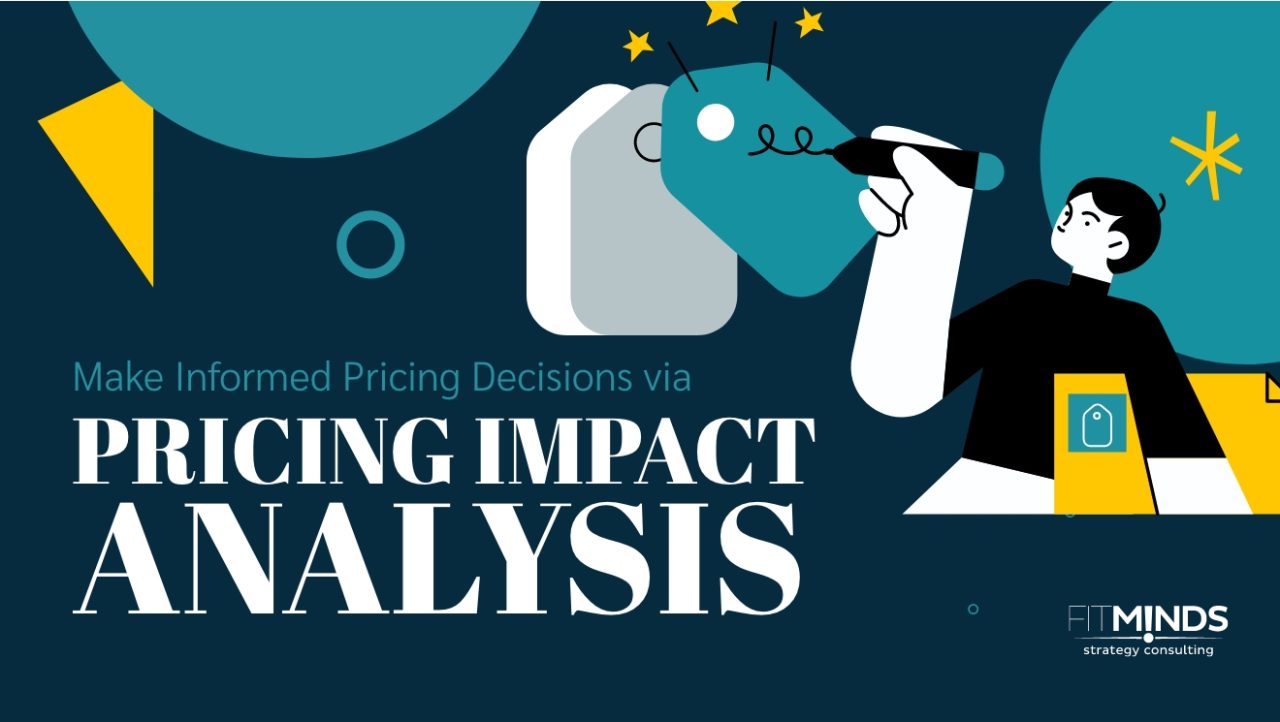Pricing Impact Analysis is the process of evaluating different pricing strategies on various aspects of a business, such as sales performance, market share, profitability, and customer behavior. Pricing Impact Analysis assists businesses in understanding the direct and indirect consequences of pricing decisions through a systematic evaluation of key performance indicators. By analyzing data before and after implementing pricing changes, businesses can observe how pricing adjustments affect metrics such as sales revenue, profit margins, market share, customer satisfaction, and overall profitability.
Main Benefits of Pricing Impact Analysis
Pricing Impact Analysis helps companies understand how changes in price levels might influence consumer behavior, demand for products or services, and overall market dynamics.
Pricing Impact Analysis helps you:
- to identify optimal prices at which a product or service can generate maximum revenue without losing significant market share,
- to assess customer sensitivity to price changes,
- to adapt your pricing strategies in real-time to external factors, such as changes in market demand, and thereby increase your competitive advantage,
- to estimate future revenue and profit based on different pricing scenarios, helping businesses to make informed decisions.
Explanation of Pricing Impact Analysis
Pricing Impact Analysis is a methodical examination of how pricing decisions affect different facets of a business. By analyzing the correlation between pricing adjustments and key performance indicators, businesses gain insights into the direct and indirect consequences of their pricing strategies.
There are various methods of pricing analysis that businesses use. Some of the most commonly used methods are the following:
Before/After Analysis: Before/After Analysis compares the performance of a business or product before and after implementing a pricing change. It aims to assess the effectiveness of the pricing strategy by measuring changes in key performance indicators or metrics.
Price Elasticity Analysis: Price Elasticity Analysis examines how changes in price affect the quantity demanded of a product or service.
Elasticity = Percentage Change in Quantity Demanded / Percentage Change in Price
Elasticity is calculated by dividing the percentage change in quantity demanded by the percentage change in price. If elasticity is less than 1 but greater than 0, demand is inelastic, meaning customers are relatively insensitive to price changes. Conversely, if elasticity is equal to or less than -1, demand is elastic, indicating that customers are very sensitive to price changes.
Conjoint Analysis: Conjoint Analysis is a method used to understand how consumers value different product features and prices. It presents consumers with various product profiles and prices, asking them to choose their preferred options. By analyzing these choices, businesses can determine which product features and price points are most valued by consumers, helping them make informed pricing decisions to maximize customer satisfaction and competitiveness.
A/B Testing: A/B Testing involves comparing the effectiveness of different pricing strategies by randomly assigning customers to different pricing groups and observing their responses. One group (Group A) is exposed to the existing pricing strategy, while another group (Group B) is exposed to a new pricing strategy. By analyzing the differences in customer behavior, such as purchase rates, revenue, or customer satisfaction, between the two groups, businesses can determine which pricing strategy performs better.
Break-Even Analysis: Break-Even Analysis helps businesses determine the point at which total revenue equals total costs, resulting in neither profit nor loss. Businesses calculate the number of units that need to be sold at a given price to cover all costs.

Businesses should ensure that they address the following issues for informed pricing strategies:
- Understand the cost structure, encompassing all direct and indirect costs associated with production, distribution, and marketing.
- Analyze competitor pricing strategies and promotions to grasp market dynamics effectively.
- Segment customers based on demographics, psychographics, or behavioral characteristics.
- Evaluate the value proposition of the product or service relative to competitors, identifying unique selling points and assessing how price influences perceived value.
- Analyze market demand and price elasticity through methods such as studying historical sales data or conducting surveys.
- Consider regulatory factors and legal constraints that may impact pricing decisions.
- Review distribution channels and associated costs thoroughly.
- Assess broader economic conditions and trends, including factors such as inflation, currency fluctuations, and overall market stability, which may affect pricing decisions
By conducting a comprehensive pricing impact analysis, businesses can make data-driven decisions to optimize their pricing strategies and achieve their desired business outcomes.
How to Apply Pricing Impact Analysis
To apply Pricing Impact Analysis to your business, FITMINDS is providing an adoption of the model that fits your company and your company’s needs. By using Pricing Impact Analysis, organizations can make informed pricing decisions.
Contact us to get more information or discover your probable personalized roadmap for Pricing Impact Analysis.
Additional Tips and Readings
- To set the best price for your product, you can read The Pricing Strategy Matrix
- You can learn more about pricing strategies with the Break-Even Analysis
- You can consider FITMINDS Portfolio Optimization Tree, GE-McKinsey Matrix, and BCG Matrix as portfolio optimization tools.
- To create an Embryonic/New market, you can make use of Blue Ocean Strategy.
Contact us to optimize your pricing strategies and achieve desired business outcomes via Pricing Impact Analysis.



13 comments
Pingback: Cheap androxal no script
Pingback: buy cheap rifaximin generic in canada
Pingback: order enclomiphene generic form
Pingback: prix kamagra
Pingback: flexeril cyclobenzaprine special price
Pingback: discount dutasteride us pharmacies
Pingback: how to order gabapentin generic ingredients
Pingback: buy cheap fildena no prescription needed
Pingback: online order itraconazole generic available
Pingback: ordering staxyn online without a prescription
Pingback: how to order avodart price generic
Pingback: purchase xifaxan american pharmacy
Pingback: necesito comprar kamagra en chile
Comments are closed.